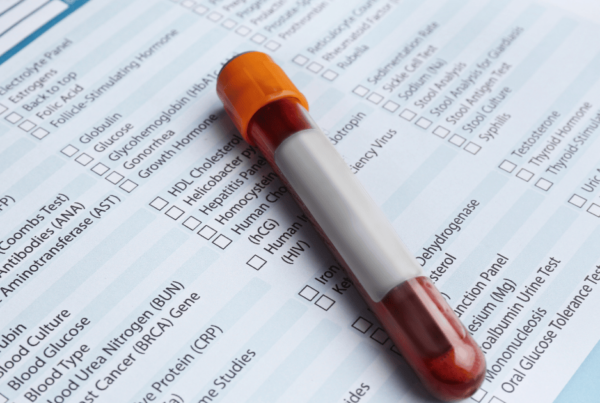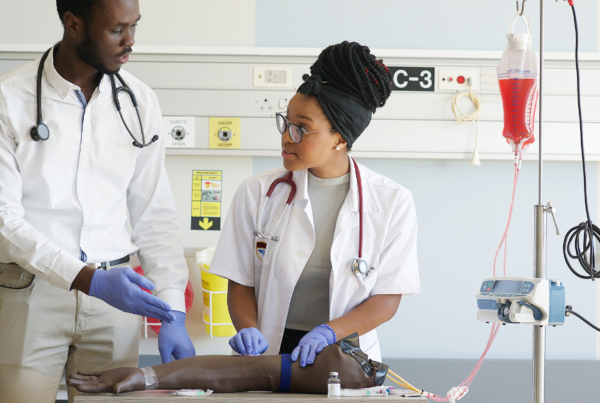Struggling with difficult venipuncture? Not alone! For phlebotomists, locating suitable veins for blood draws can be a challenge. This is especially true for patients with fragile veins, obesity, or excessive movement. However, there’s a game-changer: vein finder technology.
| Key Takeaways for Phlebotomists |
| Vein finders are a valuable tool that can significantly improve the efficiency and accuracy of blood draws. |
| By using vein finders, phlebotomists can reduce patient discomfort, minimize complications, and enhance patient satisfaction. |
| Vein finders are beneficial for various healthcare settings beyond phlebotomy. |
What is a Vein Finder and How Does it Work?
Phlebotomy Now School – Vein Finders – A Phlebotomist’s Guide to Efficient Blood Draws
A vein finder, also known as an infrared vein viewer or laser vein finder, is a medical device that utilizes near-infrared light to illuminate veins beneath the skin’s surface. Hemoglobin, the protein in red blood cells that carries oxygen, absorbs this light. The vein finder captures this absorption pattern and projects a real-time image of the underlying vascular structure directly onto the patient’s skin.
This technology revolutionized phlebotomy by providing a clear visual map of accessible veins. Gone are the days of relying solely on palpation and experience to locate suitable puncture sites. With a vein finder, phlebotomists can:
- Increase first-attempt success rates: This translates to less discomfort for patients and improved efficiency.
- Reduce the need for multiple needle insertions: This minimizes pain and potential complications.
- Enhance patient experience: A smoother blood draw experience leads to higher patient satisfaction.
Benefits of Vein Finders for Phlebotomists
- Improved Accuracy and Efficiency: Vein finders allow phlebotomists to quickly identify suitable veins, leading to more accurate needle placement and faster blood draws.
- Reduced Pain and Discomfort: Fewer needle insertions minimize patient discomfort and anxiety.
- Enhanced Patient Satisfaction: A positive blood draw experience fosters trust and improves patient satisfaction.
- Minimized Complications: Accurate vein visualization reduces the risk of complications like hematoma formation or nerve damage.
- Increased Confidence: Vein finders empower phlebotomists with the visual information needed to perform blood draws confidently, especially with challenging patients.
Clinical Applications of Vein Finders
Beyond phlebotomy, vein finders offer numerous benefits in various healthcare settings:
- Intravenous (IV) Catheterization: Precise vein identification facilitates successful IV placement, reducing the need for multiple attempts.
- Blood Transfusions: Vein finders ensure accurate selection of veins for blood transfusions.
- Pediatric Care: Locating veins in children can be difficult. Vein finders simplify the process, minimizing stress for young patients.
- Geriatric Care: Fragile veins in elderly patients are easier to visualize with vein finders.
- Dialysis: Vein finders aid in identifying suitable veins for dialysis procedures.
- Emergency Medicine: Rapid vein identification is crucial in emergency situations. Vein finders expedite this process.
- Plastic & Aesthetic Surgery: Vein finders assist in pre-operative assessment and procedures like facial rejuvenation or sclerotherapy.
Supporting Research
Clinical studies have consistently demonstrated the effectiveness of vein finder technology:
- Increased First-Attempt Success Rates: Studies like those by Zhang et al. (2019) and Cho et al. (2018) show significant improvement in first-attempt success rates for peripheral intravenous access with vein finders.
- Improved Patient Satisfaction: Patients report higher satisfaction with vein finder use due to reduced pain and a more positive overall experience.
- Reduced Complications: Studies indicate a decrease in complications like hematoma formation when vein viewers are utilized (Zhang et al., 2020).
Key Features of Vein Finders
Vein finder devices offer various features to enhance usability:
- Real-time Vein Projection: Provides a clear image of veins for accurate selection.
- Adjustable Light Intensity: Optimizes vein visualization based on patient skin tone.
- Variable Color Coding: Adjusts the color hue for better visibility under different lighting conditions.
- Portability and Ergonomics: Many devices are lightweight and handheld for ease of use.
- Image Recording and Storage: Advanced models allow capturing images for documentation.
Choosing the Right Vein Finder
The ideal vein finder for your facility depends on several factors:
- Patient Volume: Facilities with high patient turnover may benefit from multiple devices.
- Department Size: Consider the number of phlebotomists who will use the device.
- Budget: Vein finder prices vary based on features.
Considerations for Implementation
Once you’ve chosen a vein finder, here’s what to keep in mind:
- Staff Training: Proper training ensures staff can utilize the device effectively.
- Integration with Workflow: Develop a workflow that seamlessly integrates vein finder use into your existing phlebotomy procedures.
- Cleaning and Maintenance: Regular cleaning and maintenance ensure optimal performance.
Maintenance Requirements for Vein Finders
To maintain your vein finder and ensure its longevity, follow these practices:
- Cleaning: Regularly clean the device’s surface and optics with appropriate disinfectants.
- Calibration: Schedule periodic calibration to maintain accurate vein visualization.
- Software Updates: Install software updates from the manufacturer for optimal functionality.
- Battery Management: Monitor battery life and follow proper charging protocols.
The Future of Vein Finders in Phlebotomy
Vein finder technology is continuously evolving. Here are some potential future advancements:
- Artificial Intelligence (AI): AI integration could analyze vein patterns and suggest optimal puncture sites.
- Wireless Connectivity: Wireless connectivity could allow data sharing with electronic health records.
- Cost Reduction: As technology matures, vein finders may become more affordable for wider adoption.
Frequently Asked Questions (FAQs)
What are the different types of vein finders?
There are various vein finders on the market, but they all utilize near-infrared light technology to visualize veins. Some models offer additional features like adjustable light intensity, variable color coding, and image recording capabilities.
How much do vein finders cost?
The price of vein finders varies depending on the brand, model, and features offered. Basic models can start around a few hundred dollars, while high-end devices with advanced features can cost several thousand dollars.
Are vein finders difficult to use?
Most vein finders are user-friendly and require minimal training. However, proper training is essential to ensure optimal use and maximize the benefits of the device.
Are vein finders safe for patients?
Vein finders utilize near-infrared light, which is a safe and non-ionizing radiation. There are no known risks associated with proper use of vein finders.
Can vein finders be used on all patients?
Vein finders work best with patients who have good blood flow and palpable veins. However, they can still be helpful in some cases with obese patients or those with difficult-to-locate veins.
Incorporating Vein Finders into Your Phlebotomy Practice
Considering adding vein finders to your phlebotomy practice? Here are some steps to get started:
- Research and compare different vein finder models. Consider factors like features, price, and user reviews.
- Develop a budget and secure funding for vein finder acquisition.
- Train your staff on proper vein finder use and maintenance.
- Integrate vein finders into your existing phlebotomy workflow.
- Monitor the impact of vein finders on your practice. Track metrics like first-attempt success rates, patient satisfaction, and procedure time.
Conclusion
Vein finders are a valuable tool for phlebotomists, offering numerous benefits for both healthcare professionals and patients. By increasing accuracy, efficiency, and patient satisfaction, vein finders are transforming the field of phlebotomy. If you haven’t yet explored this technology, it’s definitely worth considering for your practice.
Phlebotomy Now School: Equipping You for Success
Phlebotomy Now School is dedicated to providing comprehensive phlebotomy training that equips students with the skills and knowledge to excel in this rewarding field. We incorporate the latest advancements in phlebotomy, including vein finder technology, into our curriculum.
Disclaimer: The information contained in this article is for general informational purposes only and does not constitute medical advice. Please consult with a qualified healthcare professional for any questions or concerns you may have regarding your specific health needs.
Ready to take your phlebotomy skills to the next level?
Contact Phlebotomy Now School today to learn more about our accredited phlebotomy technician program.


